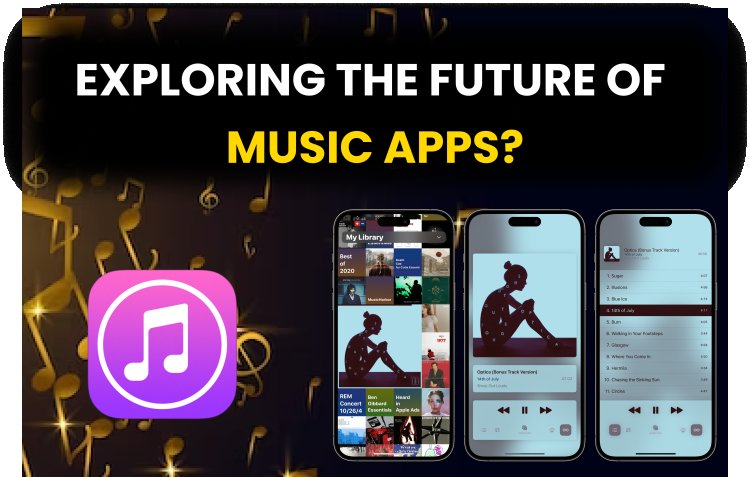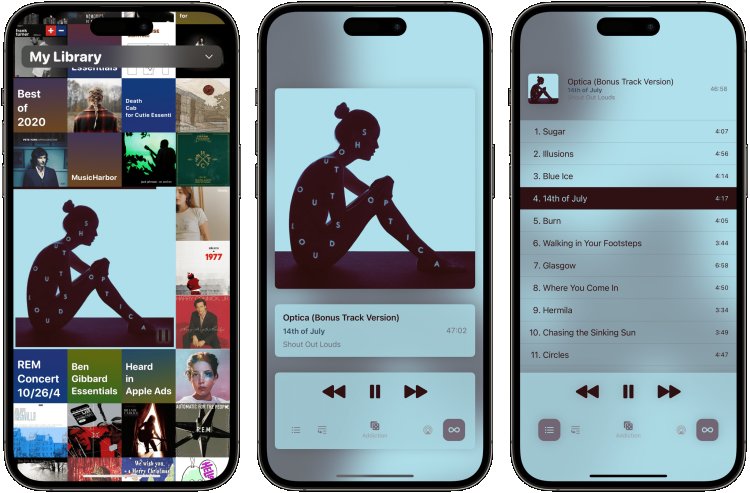Exploring the Future of Music Apps: Innovation, Earnings, and Trends.
Development Cost of Music Apps? Features of a Music App? How to make a music app? Earnings in Music Apps?

Music has become an integral part of our lives. It's not just about melodies and beats; it's about emotions, memories, and experiences. With the advent of streaming platforms like Spotify, the way we consume music has undergone a remarkable transformation.
Introduction:
In a world where music is the universal language that transcends boundaries, a reliable music streaming app has become an essential companion for enthusiasts and casual listeners alike. One such standout in the realm of digital music platforms is Spotify – a pioneer that has set the standard for what a music app should be. In this blog, we'll explore the magic behind music apps like Spotify, delving into their features, impact, and the new turn they bring to our lives.

Development Cost of Music Apps
The approximate expenditure for creating a music app like Spotify typically ranges from Rs 2-3 lakhs. However, this estimate is highly adaptable and changes depending on the specific features and demands you have in mind. Explore meratemplate.com for such types of services.
Features of a Music App:
- Vast Music Library: A diverse collection of songs across genres, languages, and eras is crucial.
- Personalized Recommendations: Using algorithms to suggest music based on user preferences, listening history, and behavior.
- User-Friendly Interface: Intuitive navigation, easy playlist creation, and seamless user experience across devices.
- Offline Listening: Allowing users to download songs for offline listening, especially useful in areas with poor connectivity.
- Social Integration: Sharing, following friends, creating collaborative playlists, and connecting with other users.
- High-Quality Audio: Providing options for high-quality streaming for audiophiles.
- Podcasts and Original Content: Offering podcasts, exclusive content, and artist interviews to diversify the user experience.
- Lyrics Integration: Displaying lyrics synchronized with the music playback.
- Cross-Platform Compatibility: Availability on various platforms like iOS, Android, web, smart speakers, etc.
- Customization Options: Allowing users to customize their profiles, playlists, and recommendations.
Earnings in Music Apps
Subscription Models:
- Premium Subscriptions: Offering ad-free listening, offline downloads, and other premium features for a monthly fee.
- Family Plans: Discounted subscriptions for multiple users under a single plan.
- Student Plans: Reduced rates for students.

Advertising:
Offering a free tier supported by ads, where users can access music for free but with intermittent ads. Advertisers pay to have their content showcased to the app's user base.
Partnerships and Collaborations:
Teaming up with other brands, artists, or events for promotions, exclusive content, or special access. These partnerships often bring in revenue through sponsorships or collaborations.
Data and Analytics:
Utilizing user data and analytics for targeted advertising or selling insights to third parties interested in market trends and user behaviors.
Merchandising and Concert Tickets:
Direct sales of merchandise or concert tickets related to the artists featured on the platform. This can involve partnerships with event organizers or merchandise sellers.
Licensing and Royalties:
Paying licensing fees and royalties to artists, labels, and music publishers for streaming their music on the platform.
In-App Purchases:
Selling additional features, exclusive content, or digital goods within the app.
Understanding the earnings in this industry requires a deep dive into the specifics of user engagement, conversion rates from free to premium tiers, regional differences in user behavior, and the effectiveness of their marketing strategies. For instance, a vast user base might not necessarily mean higher earnings if the majority of users opt for the free tier with ads.
Market Overview:
- Industry Growth: The music streaming industry has experienced exponential growth, with a shift from physical media to digital streaming. According to Statista, global music streaming revenues were projected to surpass $23 billion in 2021.
- Dominant Players: Spotify, Apple Music, Amazon Music, and other platforms dominate the market. They offer vast libraries, personalized playlists, podcasts, and user-friendly interfaces.
- Consumer Behavior: User demand for convenience, personalized experiences, and diverse content drives the market. Features like curated playlists, AI-powered recommendations, and exclusive content attract and retain users.
Evolution of Revenue Models
- Subscription-Based Services: Subscription-based models have been the basis of revenue for music streaming apps. Users pay a monthly fee for access to a vast library of songs, ad-free listening, and additional features like offline downloads and high-quality audio streaming. This model has proven successful, with Spotify reporting substantial growth in paid subscribers year after year.
- Ad-Supported Free Tiers: Ad-supported free tiers offer a gateway to attract users who might not be willing to pay for a subscription. These free versions typically include advertisements and limited features but still provide access to a wide range of music. They serve as a funnel for converting free users into paying subscribers.
- Original Content and Artist Exclusives: Platforms are investing heavily in original content and exclusive deals with artists. From podcasts to live sessions and exclusive album releases, these initiatives not only attract users but also retain existing subscribers, fostering loyalty and engagement.
The Future Landscape and Trends
- Podcast Integration: The coming together of music and podcasts within a single platform is gaining momentum. Music streaming services are expanding their offerings to include podcasts, catering to users' varied audio preferences and creating a one-stop destination for all audio content.
- Blockchain and Decentralization: The adoption of blockchain technology holds the potential to transform the music industry by addressing issues related to rights management, royalties, and transparency. Decentralized platforms aim to empower artists by enabling direct peer-to-peer transactions and fairer compensation.
- Augmented Reality and Virtual Concerts: The emergence of augmented reality (AR) and virtual reality (VR) technologies is reshaping the concert experience. Virtual concerts allow artists to reach global audiences, breaking geographical barriers and offering immersive performances from the comfort of one's home.

Conclusion:
The music app landscape is evolving, and this new competition promises a harmonious blend of technology and emotion. It's not just another Spotify; it's a platform that aims to become your musical soulmate. With personalization, rediscovery, community, and a commitment to creating a musical journey unique to every user, it's poised to redefine how we experience music.
As the curtains rise on this new era of music streaming, the stage is set for a symphony of innovation and passion. So, brace yourselves for a musical revolution that transcends the boundaries of what we've known—a journey that promises to sound deep within our hearts.
Let the music play on, in ways we've never imagined before.
------------------------------------------------------------------------------------
- Contact us: 8888647482
- Email id: sunil@meratemplate.com
- Telegram - https://t.me/sunilyadavtutorial
- Youtube - https://www.youtube.com/c/MeraTemplate
Thank you so much for taking the time to read my article.




 Mera Template
Mera Template 





































